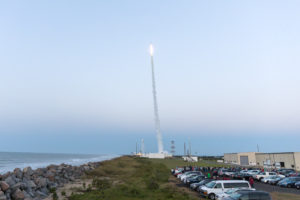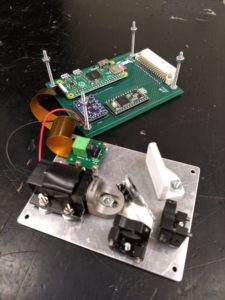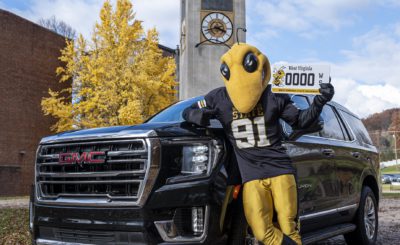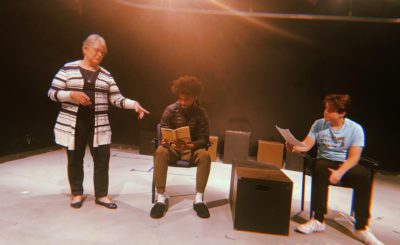
While most students spent their summer contemplating future classes or hanging out at the beach, State Computer Science major Jon Musselwhite aimed for the stars. His summer fun took on a whole new meaning at Wallops Island, a NASA launch site only accessible by a proud few, in order to continue a tradition of student contribution to Aeronautical advancement.
“It was an incredible opportunity,” Musselwhite said, as a proud member of the State S.P.A.C.E. (Student Partnership for the Advancement of Cosmic Exploration), and the Space Flight Design Challenge Project Lead.
His role was long hours of computer coding. But Musselwhite said, “It was all worth it.”
He and other students were members of the ‘ROKSAT X’ project, where the senior labored alongside students from Virginia Tech and the University of Puerto Rico. State students designed scientific experiments for one of the payloads launched higher into space than the orbit of the International Space Station.
State students payloads are attached to a rocket called launch decks. State’s space bound instrument deck was 12 inches in diameter and 5.13 inches tall. About the size of a birthday cake.
Aboard a rocket supplied by NASA, the package was launched into space, exposed to the harsh conditions of an unforgiving environment and returned to earth. After splashdown, it was recovered from the Atlantic off of the coast of Puerto Rico.
The equipment was then analyzed for data that will inevitably contribute to future launches for both student groups, as well as for NASA.
The WVSU team participated as part of the West Virginia Collaboration, a larger team led by WVU and funded by the Colorado Space Grant Consortium. It brings together teams from Hobart & William Smith Colleges, NASA IV&V, West Virginia State University, West Virginia Wesleyan College, West Virginia University, and Marshall University.
Musselwhite said the value of the program for students is research opportunities that lead to better leaders in any respective industry. And governmental funding is good for the university as a whole, he said.
The State team is in the early stages of the 2018-19 project and welcomes everyone who wants to get involved. There is no prerequisite. Anyone who is interested in joining should email tbe advisor, Dr. Marek Krasnansky at mkrasnansky@wvstateu.edu.
 Here’s a technical description of the State scientific package per faculty advisor Dr. Marek Krasnansky:
Here’s a technical description of the State scientific package per faculty advisor Dr. Marek Krasnansky:
- We compared the properties of four Geiger tubes by setting them next to each other in an exposed area of the payload. This was intended to allow us to decide which performs best in the vacuum of space.
- We arranged three particle detectors such that we could obtain information about the direction of radiation sources and use that information to determine the orientation of the rocket.
- We built a Michelson Interferometer and used a Raspberry Pi camera to record the interference pattern.
- We incorporated a standard Inertial Measurement Unit (or IMU) as a way of cross-referencing the various stages of rocket activity with the experiments on-board.


